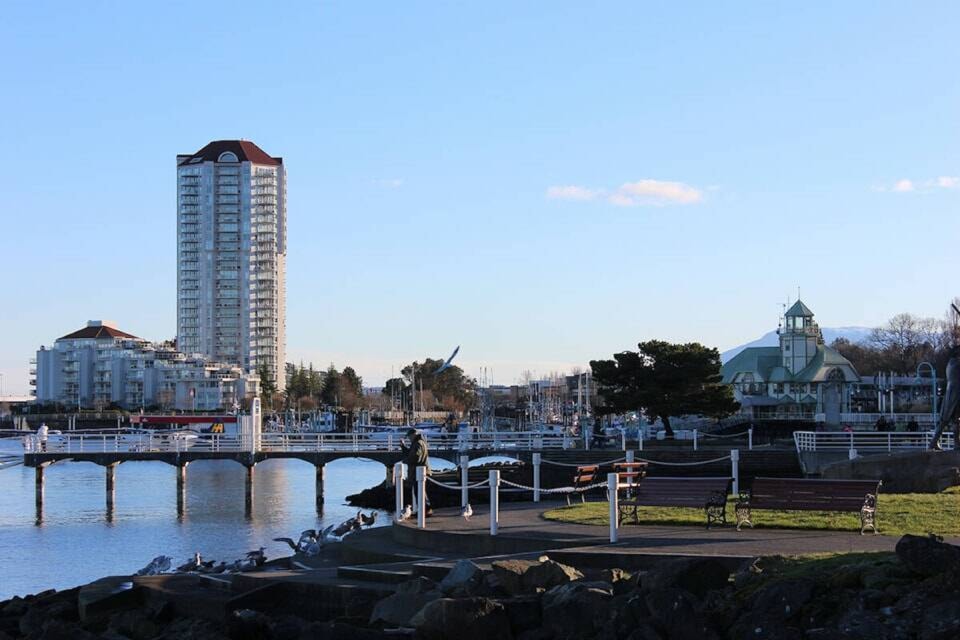Despite moving closer to a healthy vacancy rate for rentals, average rental prices rose by about nine per cent in the past year.
Amrit Manhas, Nanaimo’s economic development officer, briefed council on the housing market and other economic indicators during her ‘State of the Nanaimo Economy’ annual report.
Nanaimo’s vacancy rate rose from 2.2 per cent to 2.7 per cent in 2023, above the record-low 1.5 per cent Canada is experiencing nationally.
Manhas attributed the increase to the average rental prices to “some of the landlords offloading their higher mortgage payments down to their tenants.”
“[High interest rates] hit B.C. a little bit harder than the other provinces as we have a higher household debt load in the province of B.C. and that’s mainly due to the fact that we have higher home prices,” she told councillors at a meeting April 22. “We are, in fact, now the most expensive province in Canada for real estate.”
The city’s annual State of the Nanaimo Economy report covers housing, population, demographics and employment.
READ MORE: More people living and working in Nanaimo, finds state of the economy report
Last year 1,170 housing units were built around Nanaimo, 15 per cent fewer than 2022. Seventy-eight per cent were multi-unit dwellings such as condos or apartments. A total of $364.7 million worth of building permits were issued in 2023, down 11 per cent from 2022.
Manhas said that the city is continuing to move toward the denser urban landscape envisioned in the city plan.
“That was actually a really strong year, for having really high interest rates,” she said. “That was the second highest on record in terms of building permit values for residential permits.”
The city’s population rose to a total of almost 107,000 – however she warned the population numbers vary depending on source.
In the next decade, the highest growth is projected in the the 25 to 44 age category, which is expected to grow by 9,500 people.
There are about 45,000 households throughout the city, with approximately 8,000 estimated to be living below the poverty line, while 3,751 households have an income over $200,000.
Manhas said there was a decline in the number of job postings, mirroring the trend throughout the province, and leading to higher unemployment. The labour force grew by 3.3 per cent to almost 53,000; however, the city’s unemployment rate also grew to 4.8 per cent, while remaining below the provincial rate of 5.5 per cent.
The economic development officer said one factor contributing to an “economic slowdown” is the near completion of major projects throughout the province, such as the Trans Mountain pipeline expansion and Coastal GasLink pipeline. Another factor is a 16-per cent provincial decline in exports, impacted by the port strike and a weaker global demand.
“There is a lot of optimism around critical mineral exploration in British Columbia, there is an improved outlook for trade opportunities as well in 2024 and there’s potential for investments in life sciences, clean tech,” Manhas said. “There’s also a lot of high-profile sports events coming to the province of British Columbia. These include the Grey Cup later this year, Invictus Games in 2025, as well as the FIFA [World] Cup in 2026.”
Mayor Leonard Krog commented that he believes the data in the report presents a “pretty positive picture of the city.”
Coun. Erin Hemmens added that she was struck by the high number of residents just getting by and questioned the economic development officer about the possible reasons. Manhas responded that she believes the demographics are being influenced by a larger number of young people moving to the city from both the mainland and Victoria.
“It has to do with the cost of living right now and also this group does not have education, they haven’t pursued higher education which, unfortunately, puts them in a tough spot,” Manhas said. “A lot of times they’ve been pushed out of the larger cities and [are] moving to cities like ours because they see stronger prospects here in terms of moving forward after taking courses and stuff like that.”
